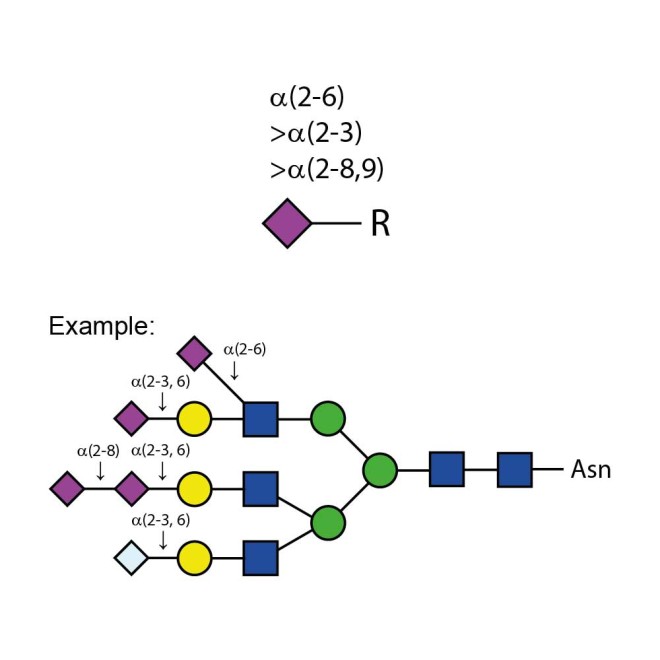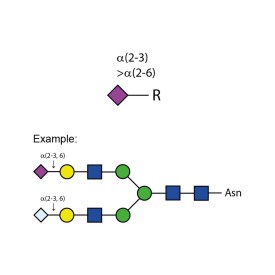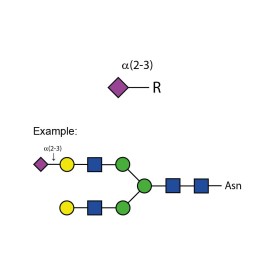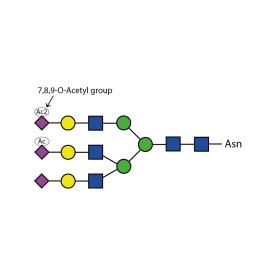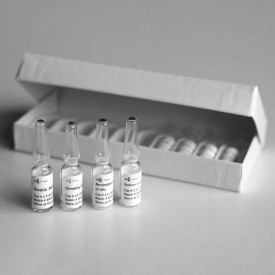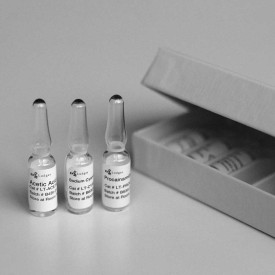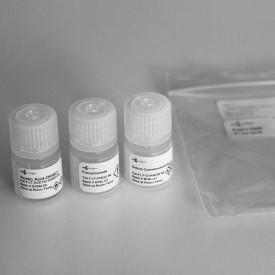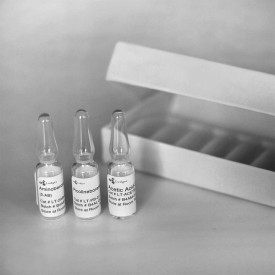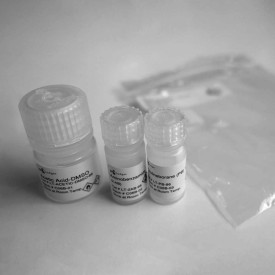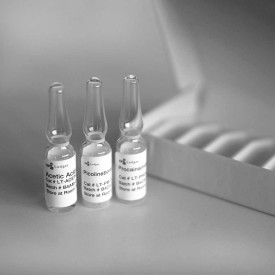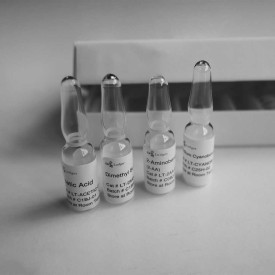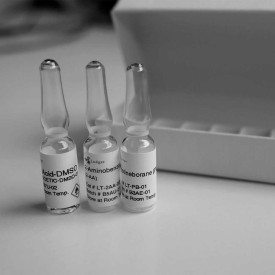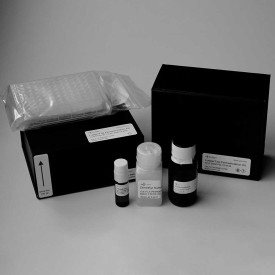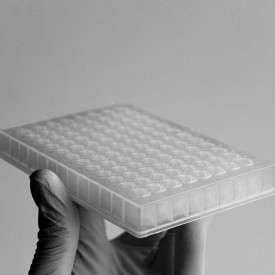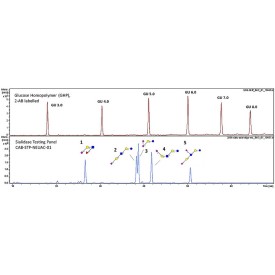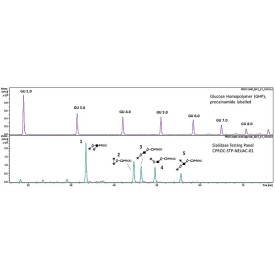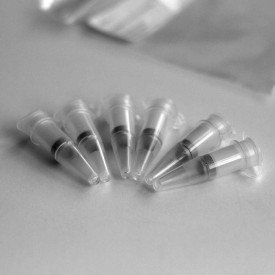Sialidase Au α-(2-3,6,8,9)
References:
1. Corfield, A. P., H. Higa, J. C. Paulson and R. Schauer. The specificity of viral and bacterial sialidases for alpha(2-3) and alpha(2-6)-linked sialic acids in glycoproteins. Biochim Biophys Acta 744: 121-12 6 (1983).
2. Dwek, R. A., C. J. Edge, D. J. Harvey, M. R. Wormald and R. B. Parekh. Analysis of glycoprotein-associated oligosaccharides. Ann Rev Biochem 62: 65-100 (1993).
3. Kobata, A. Use of endo- and exoglycosidases for structural studies of glycoconjugates. Anal Biochem 100: 1-14 (1979).
4. Ohta, Y., Y. Tsukada and T. Sugimori. Purification and properties of neuraminidase isoenzymes in Arthrobacter ureafaciens mutant. J Biochem (Tokyo) 106: 1086- 1089 (1989).
5. Prime, S., J. Dearnley , A. M. Venton, R. B. Parekh and C. J. Edge. Oligosaccharide sequencing based on exo- and endoglycosidase digestion and liquid chromatographic analysis of the products. J Chromatogr A 720: 263-274 (1996).
6. Uchida, Y., Y. Tsukada and T. Sugimori. Enzymatic properties of neuraminidases from Arthrobacter ureafaciens. J Biochem (Tokyo) 86: 573-58 5 (1979).
α(2-3,6,8,9) Sialidase Au cleaves all cleaves all non-reducing terminal sialic acid residues from complex carbohydrates and glycoproteins. The relative cleavage rates for different linkages are: α(2-6) > α(2-3) > α(2-8), α(2-9).
In addition, the enzyme will cleave branched sialic acids (linked to an internal residue). This property makes it unique among sialidases. High concentrations of enzymes and prolonged incubation times may be required for cleaving branched residues. To cleave only non- reducing terminal α(2-3) unbranched sialic acid residues, use Sialidase SP, part number E-S007.
α(2-3,6,8,9) Sialidase Au is isolated from a clone of Arthrobacter ureafaciens. The enzyme has been extensively characterized using oligosaccharide standards.
Product specification
EC: 3.2.1.18
Source: Recombinant from Arthrobacter ureafaciens in E. Coli.
Sialidase Au in 20 mM Tris-HCl, 25 mM NaCl, pH 7.5
5x Reaction Buffer 250 mM sodium phosphate, pH 6.0
Specific Activity: >135 U/mg
Activity: >5 U/mL
Molecular weight: 70,000 daltons
pH range: 4.5-7, optimum 6.0
The recommended buffer concentrate provides the optimal pH for enzyme activity with the standard substrate. If glycosidase treatment is performed at suboptimal pH because of glycoprotein solubility or activity requirements, expect some diminution in enzyme activity.
Suggested usage:
1. Add up to 100 µg of glycoprotein or 1 nmol of oligosaccharide to tube.
2. Add water to 14 µL
3. Add 4 µL 5X Reaction Buffer.
4. Add 2 µL α(2-3,6,8,9) Sialidase Au.
5. Incubate at 37°C for 1 hour.
Desialylation may be monitored by SDS-PAGE if the size differential between native and desialylated protein is sufficient for detection.
NOTE: longer incubation times are necessary if branched sialic acids are present.
Specificity: Cleaves all non-reducing terminal branched and unbranched sialic acids
Specific Activity: Defined as the amount of enzyme required to produce 1 µmole of methylumbelliferone in 1 minute at 37°C, pH 5.0 from MU-NANA [2′-(4-methylumbelliferyl)-α-D-N-acetylneuraminic acid].
Storage: Store enzyme at 4°C.
Purity: Each lot of α(2-3,6,8,9) Sialidase Au is tested for contaminating protease as follows; 10 µg of denatured BSA is incubated for 24 hours with 2 µL of enzyme. SDS-PAGE analysis of the treated BSA shows no evidence of degradation.
The production host strain has been extensively tested and does not produce any detectable glycosidases.
Stability: Stable at least 12 months when stored properly. Several days exposure to ambient temperatures will not reduce activity. Enzyme remains active at 37°C for at least one week.


